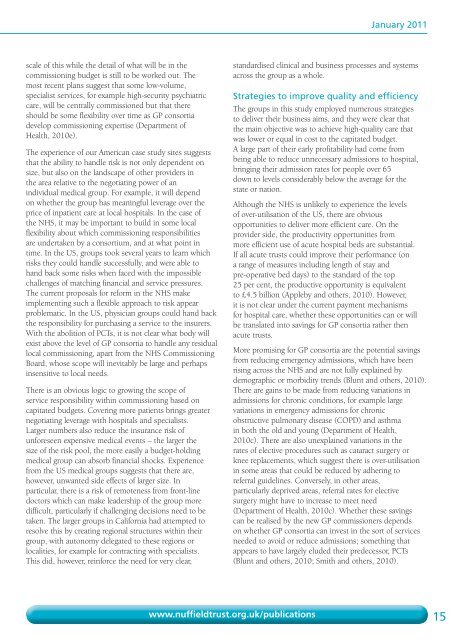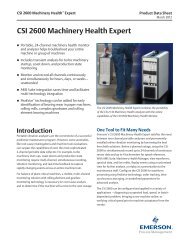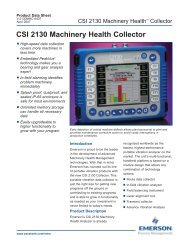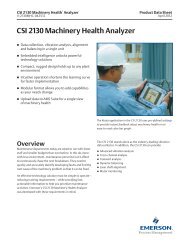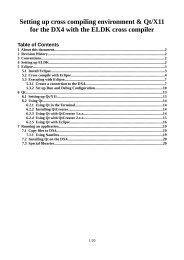Download Publication - The Nuffield Trust
Download Publication - The Nuffield Trust
Download Publication - The Nuffield Trust
You also want an ePaper? Increase the reach of your titles
YUMPU automatically turns print PDFs into web optimized ePapers that Google loves.
January 2011scale of this while the detail of what will be in thecommissioning budget is still to be worked out. <strong>The</strong>most recent plans suggest that some low-volume,specialist services, for example high-security psychiatriccare, will be centrally commissioned but that thereshould be some flexibility over time as GP consortiadevelop commissioning expertise (Department ofHealth, 2010e).<strong>The</strong> experience of our American case study sites suggeststhat the ability to handle risk is not only dependent onsize, but also on the landscape of other providers inthe area relative to the negotiating power of anindividual medical group. For example, it will dependon whether the group has meaningful leverage over theprice of inpatient care at local hospitals. In the case ofthe NHS, it may be important to build in some localflexibility about which commissioning responsibilitiesare undertaken by a consortium, and at what point intime. In the US, groups took several years to learn whichrisks they could handle successfully, and were able tohand back some risks when faced with the impossiblechallenges of matching financial and service pressures.<strong>The</strong> current proposals for reform in the NHS makeimplementing such a flexible approach to risk appearproblematic. In the US, physician groups could hand backthe responsibility for purchasing a service to the insurers.With the abolition of PCTs, it is not clear what body willexist above the level of GP consortia to handle any residuallocal commissioning, apart from the NHS CommissioningBoard, whose scope will inevitably be large and perhapsinsensitive to local needs.<strong>The</strong>re is an obvious logic to growing the scope ofservice responsibility within commissioning based oncapitated budgets. Covering more patients brings greaternegotiating leverage with hospitals and specialists.Larger numbers also reduce the insurance risk ofunforeseen expensive medical events – the larger thesize of the risk pool, the more easily a budget-holdingmedical group can absorb financial shocks. Experiencefrom the US medical groups suggests that there are,however, unwanted side effects of larger size. Inparticular, there is a risk of remoteness from front-linedoctors which can make leadership of the group moredifficult, particularly if challenging decisions need to betaken. <strong>The</strong> larger groups in California had attempted toresolve this by creating regional structures within theirgroup, with autonomy delegated to these regions orlocalities, for example for contracting with specialists.This did, however, reinforce the need for very clear,standardised clinical and business processes and systemsacross the group as a whole.Strategies to improve quality and efficiency<strong>The</strong> groups in this study employed numerous strategiesto deliver their business aims, and they were clear thatthe main objective was to achieve high-quality care thatwas lower or equal in cost to the capitated budget.A large part of their early profitability had come frombeing able to reduce unnecessary admissions to hospital,bringing their admission rates for people over 65down to levels considerably below the average for thestate or nation.Although the NHS is unlikely to experience the levelsof over-utilisation of the US, there are obviousopportunities to deliver more efficient care. On theprovider side, the productivity opportunities frommore efficient use of acute hospital beds are substantial.If all acute trusts could improve their performance (ona range of measures including length of stay andpre-operative bed days) to the standard of the top25 per cent, the productive opportunity is equivalentto £4.5 billion (Appleby and others, 2010). However,it is not clear under the current payment mechanismsfor hospital care, whether these opportunities can or willbe translated into savings for GP consortia rather thenacute trusts.More promising for GP consortia are the potential savingsfrom reducing emergency admissions, which have beenrising across the NHS and are not fully explained bydemographic or morbidity trends (Blunt and others, 2010).<strong>The</strong>re are gains to be made from reducing variations inadmissions for chronic conditions, for example largevariations in emergency admissions for chronicobstructive pulmonary disease (COPD) and asthmain both the old and young (Department of Health,2010c). <strong>The</strong>re are also unexplained variations in therates of elective procedures such as cataract surgery orknee replacements, which suggest there is over-utilisationin some areas that could be reduced by adhering toreferral guidelines. Conversely, in other areas,particularly deprived areas, referral rates for electivesurgery might have to increase to meet need(Department of Health, 2010c). Whether these savingscan be realised by the new GP commissioners dependson whether GP consortia can invest in the sort of servicesneeded to avoid or reduce admissions; something thatappears to have largely eluded their predecessor, PCTs(Blunt and others, 2010; Smith and others, 2010).www.nuffieldtrust.org.uk/publications 15


